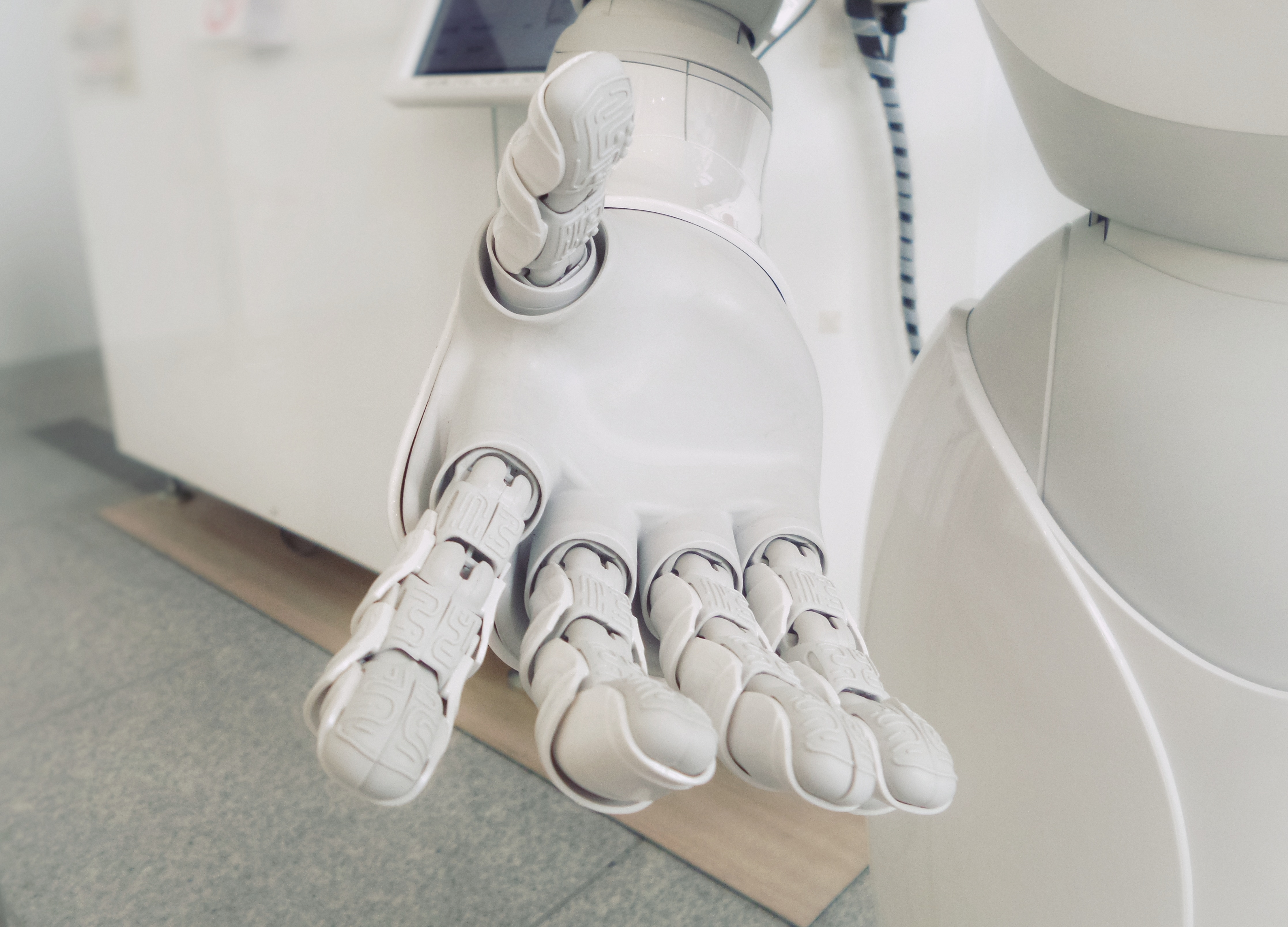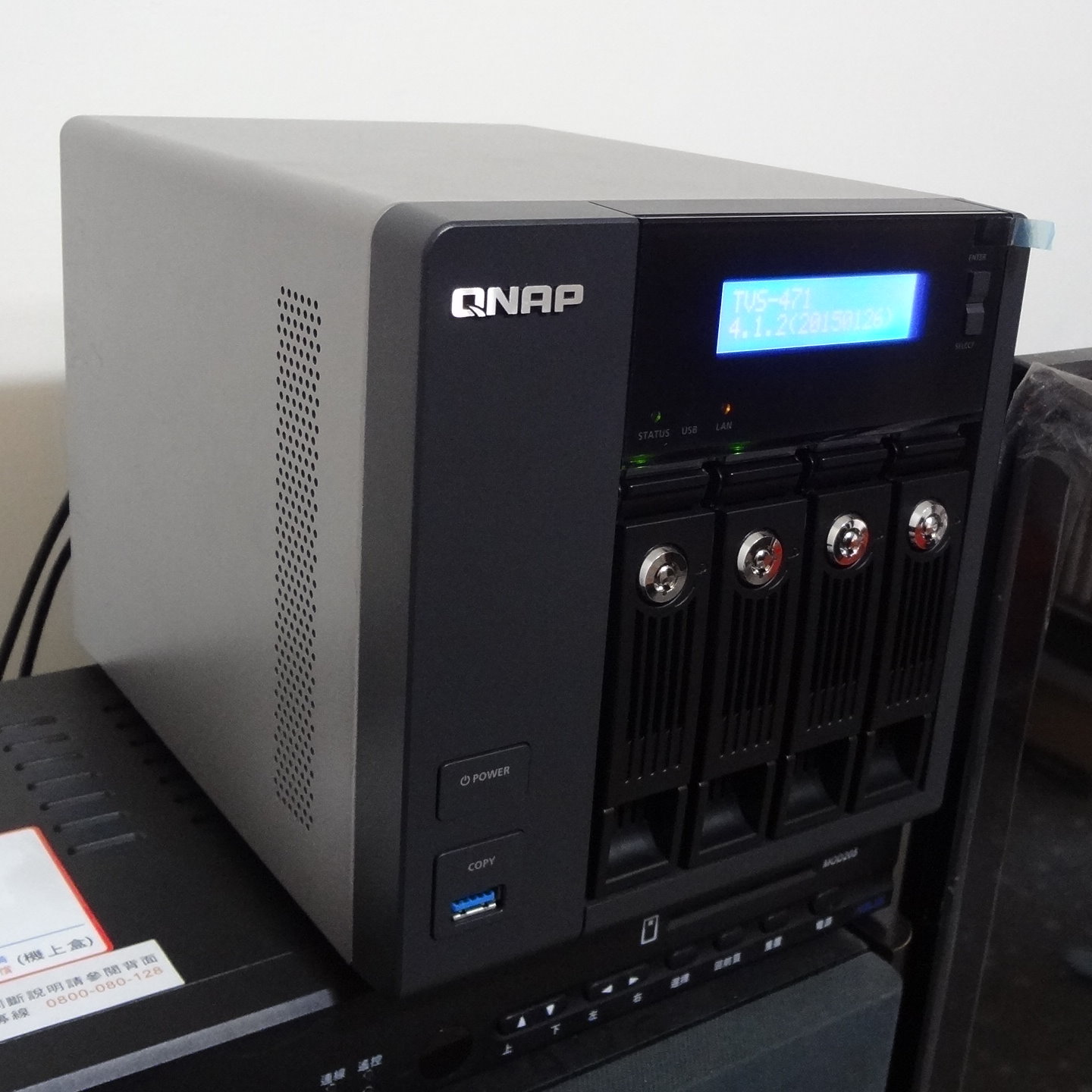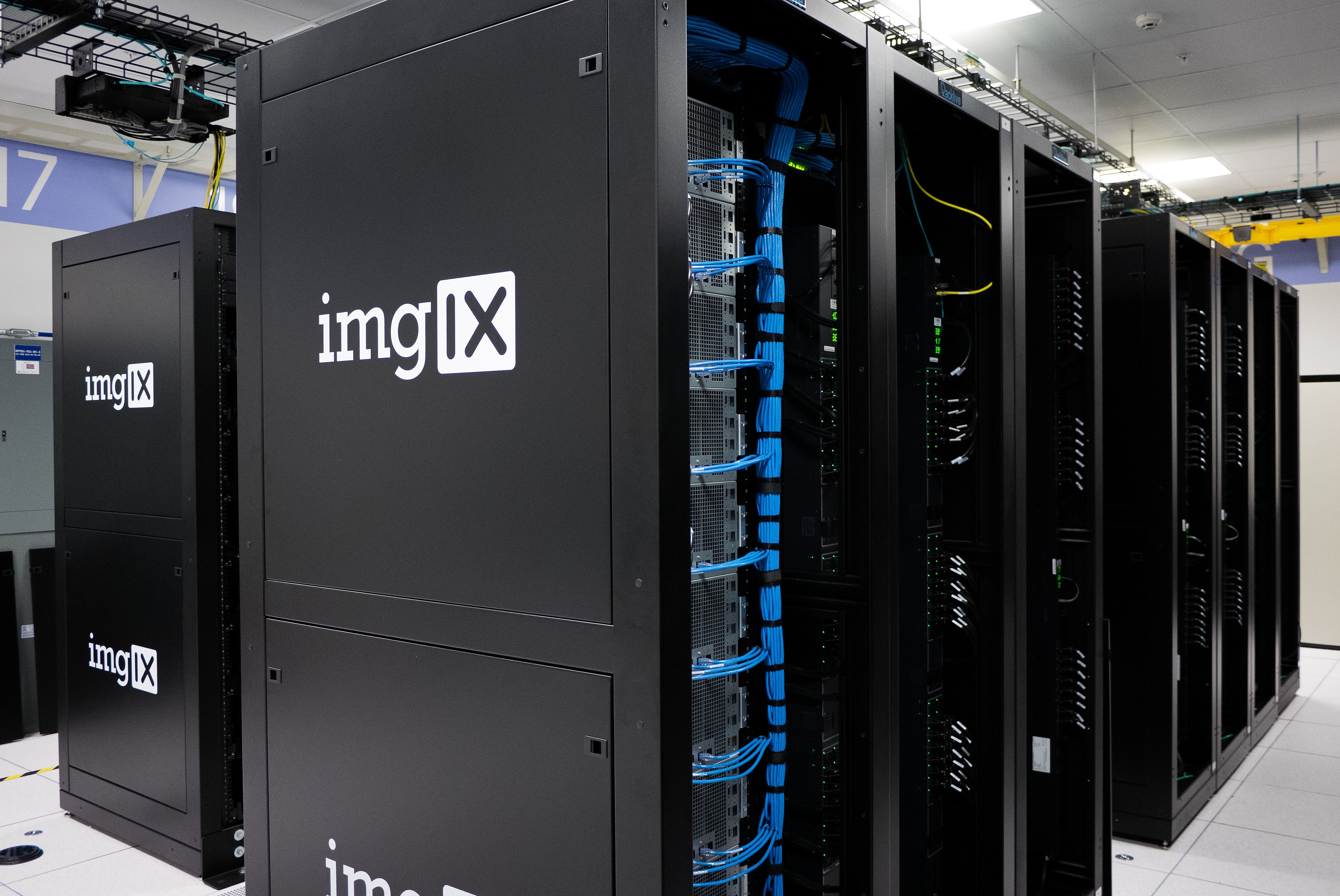
Why Should You Work in the IT Industry?
Information technology (IT) is the application of computers to store, study, collect, send, and manipulate data or information. IT generally involves computers and computer networks, but it can also encompass other distribution technologies such as televisions and telephones. IT will always be relevant because technology is a critical component in modern society and its role in the world is only growing, not diminishing.
Numerous industries depend on IT, including computer hardware, software, electronics, the Internet, telecommunications, and e-commerce. Consequently, many different companies and industries are in need of IT specialists.
If you are a young professional looking for a job or a student interested in finding a career path, here are 5 reasons why information technology may be the best career path for you.
- Research, Development, and Innovation: IT professionals are constantly looking into new ways to advance the lives of everyday people, and the IT industry is constantly changing and evolving. If you are interested in performing innovative research, discovery, development, and innovation, then there is no better field than information technology.
- Meaningful Work: Information technology provides a productive environment for people to utilize their ingenuity and creativity to find solutions to real-life problems. People who enjoy puzzles, solving problems, and thinking outside the box may be able to find their passion in IT.
- Challenging: Information technology is not easy, and it requires a lot of time and critical thinking. If you are the type of person who loves and needs to be constantly challenged, then jobs in IT may be for you. Unlike jobs that revolve around the same routine day after day, information technology positions consistently offer new problems and challenges so that you never get bored with your work.
- Variation: IT jobs are not limited to computers and computer networks. IT professionals have access to a wide variety of opportunities across many technological industries. Software, communications, high-tech manufacturing, and computer-related services are the most popular areas for IT specialization.
Despite the certainty of IT opportunities in technologically-based industries, other fields also rely on technology professionals, including the following major industries:
- Medicine
- Transportation
- Energy
- Agriculture
- Law enforcement
- Banking and financial services
Since IT offers endless possibilities, you can combine your love of technology with your other passions in life, which will help maintain your enthusiasm and happiness throughout your career.
- High Demand/High Pay: IT professionals are needed to maintain, optimize, and utilize new technologies. Businesses in every industry rely on some form of technology to drive revenue, maintain efficiency, store information securely, and communicate effectively. Since these vital business operations depend on technology, the market for IT professionals is very lucrative.
Now that you know some of the best reasons why you should consider pursuing a career in IT, here are 7 job specializations that aspiring IT professionals may find interesting.
- Software Developer: Software developers utilize software solutions to build new programs, applications, and websites. They write test codes and rely on new development tools. Their work involves talking to clients and employees to assess what type of solution system is needed to solve certain technological problems.Software developers require technical, collaborative, attentive, and interactive skills, as well as knowledge of analytics, logical thinking, and communication.
- Systems Analyst: Systems analysts monitor existing IT systems to assess how well they meet their employer’s needs and write up requirements for new systems. They may also be involved in training users in the use and maintenance of these systems.Systems analysts must be proficient in communication, analysis, and the extraction and translation of technological information.
- Business Analyst: Business analysts must communicate with employees and business managers about technology and its efficacy. They identify opportunities to improve processes and business operations with information technology. The role is based on analyzing customer needs and creating simple technological solutions.Business analysists need to be skilled in communication, problem-solving, presentation, and facilitation.
- IT Support Analyst: IT support analysts provide technical support and advice to IT users in-person or via email, phone, and social media. Their clientele is comprised of a particular company, business, or the customers of a particular product or service.IT Support Analysts need to have patience, problem-solving abilities, and exemplary communication skills.
- Network Engineer: Network engineering is one of the more technically demanding IT jobs. Their responsibilities involve planning, managing, maintaining, and upgrading communication systems, local area networks, and wide area networks for a business or organization. Network engineers are also responsible for security, data storage, and disaster recovery strategies.Some skills required for this job are planning, analysis, and good communication. Network Engineers also need exceptional organizational skills, knowledge of analytics, and management experience.
- IT Consultant: IT consultants provide technical support for clients who are developing IT systems.It Consultants need to be adept at teamwork, communication, and project management.
- Technical Sales Representative: Technical sales representatives do not need as much technological education and experience as other IT professions, but their responsibilities still require a respectable understanding of how IT is utilized in business.Technical sales involve selling hardware by communicating the benefits and value of certain business systems to a client or organization. The job requires making phone calls, participating in meetings, attending conferences, and drafting proposals.Technical Sales Representatives need to have product knowledge, mobility, and business awareness.
Limitless Scope
Information technology has become a ubiquitous aspect of our world, and it provides ample opportunity for growth, development, and success. Regardless where you are in your life, you may want to consider acquiring and developing skills and experience in IT so you can improve your prospects of securing employment, improving your efficiency, and finding an effective way to contribute to our technological society.

CLOUD TO AI AND OPEN SOURCE: THE TOP FIVE TRENDS IN SOFTWARE DEVELOPMENT
From fitness to security alarms, storage to AI, the world we live in is almost completely digitized. Everything we do needs technology to support it and, by extension, new software to run it. Software is constantly innovating and progressing to produce easier services for consumers. Here are 5 software development trends that are making life easier in the Digital Age.
- Open Source Software Continues to Grow
AS of 2017, open source software has dominated the software trend. Defined as any software that is free to download and has an open source code that is, in most cases, freely visible to all, this software can be manipulated as a whole or in part and distribute freely.
Open source is valuable for software engineers because it is free and a great way to create new products, learn from others, and share knowledge. Many tech giants are now moving towards adopting and distributing open source. For instance, Microsoft is planning to put its SQL Server onto the Linux platform.
It’s not just for software engineers, though. A lot of people in the non-IT field are reaping the benefits of open source. For instance, before web building platforms such as WordPress, Wix, and Weebly, Adobe Dreamweaver was the best way to create a website. There were plenty of limitations, however: not every consumer had access to the software, the user interface was too complicated, and coding a website required skills only a software engineer would know.
Today, with open source software like WordPress, inexperienced users do not need guidance from an IT specialist to build an appealing website. Even if they do require help, online support is offered by these sites through email and live chat. There are also blogs with tutorials for beginners and professionals alike, along with advanced CSS and coding instructions. Furthermore, open source websites make it easier for those experienced in coding to manipulate a website template as desired.
- Machine Learning and AI Become More than a Possibility
Touted as the next big thing in technology, machine learning and AI are now moving from basic functionality to full-fledged services. Smart home devices, in particular, have become a common reality. For instance, Google Home and Amazon Echo are two products that have made it to the market. These devices can control everything in your home from the temperature of a room to the security system. What these devices lack, however, is an interactive human experience.
AI robots can aid humans, talk, analyze situations, and solve problems on their own. AI is making progress in software development for interactive robots. The latest example is Kuri, a class of home robots that does what the Google Home does while sporting a humanoid look. Other robots in existence are Vyo, which interacts through beeps and electronic noises, and Pepper, which uses its arms to express itself.
- Big Data Becomes more People-centric
Big data in the traditional sense consists of large amounts of raw data that companies collect to analyze and then form plans to better interact with customers. Storing, collecting, and analyzing big data take massive amounts of time and effort.
There is always a need for better software to handle each step of the process. MapReduce was developed to analyze big data using parallel processing. Parallel processing takes chunks of data and quickly analyzes those chunks. Despite this easier processing software, the data is not humanized.
With increasing competition, experts are now pushing towards humanizing big data in order to use it better. In other words, the next big leap would be software programs that can seek more empathetic and qualitative bits of data and project it in a more visualized, accessible way.
Hadoop is getting close to humanizing big data. Hadoop is an open source, top-level project with a global community of contributors. It’s written in Java, and its original deployments include some of the most well-known organizations like Yahoo, Facebook, and LinkedIn.
While Hadoop doesn’t present big data information in a visual manner yet, the open source programming feature could help develop visual and empathetic aids.
- Smart Software, Smarter Things
It began with Apple’s iPhone. Over the years, smart devices like Amazon Echo, smartwatches, fitness trackers, and music players have come to include features that make communication, everyday living, and work more efficient. In the automotive industry, software upgrades have gone from blind spot detectors and automatic braking systems to self-driving cars.
The Jetsons era may not be too far away. Google has begun working on Waymo, a project that modifies Lexus SUVs to self-drive. They are also working on producing fully self-driving Chrysler Pacifica Hybrid minivans and self-driving trucks. Automated trucks can be a revolution for the transport industry as transportation companies will no longer require human drivers.
- Cloud Computing and Storage Is a Necessity
Software for massive data storage off a hard drive was introduced with Apple’s Cloud. In today’s digital world, consumers are creating more data than consuming it, and they are doing so in the form of texts, photos, videos, and audio files. The cloud system allows users to store data that can be accessed on different devices, like Google Drive. Cloud software is still evolving to take in more data. This software trend is not likely to slow down anytime soon.
Software development is likely to continue to evolve as humans increasingly rely on more technology. This is great news for future generations who will be entering the workforce in the years to come. Advances in software for fields like medicine and agriculture can transform industries and, in extension, society. Any trend in software development that helps society progress should be welcomed and supported.

HDD VS. SSD: WHICH ONE SHOULD A DATA CENTRE USE?
Traditionally, a computer’s memory is stored on a spinning magnetic disk known as a hard disk drive, or HDD. However, in recent years, large leaps in technology have brought to light another form of memory storage: the solid state drive, or SSD.
With regards to function, both HDDs and SSDs perform the same job of storing a computer’s memory, with the distinction arising from how each specifically stores memory. In the traditional HDD, memory is stored on a magnetic disk that spins when powered on. A read/write arm detects and alters data through magnetization, with the changes in the magnetization representing the data.
SSD, on the other hand, stores memory on an integrated circuit of flash memory chips. This allows for memory to be safely stored even when power to the drive is not present, and it also allows for more consistent data preservation after sudden power surges when compared to traditional HDDs.
Understanding the Differences between HDD and SSD
Although both HDDs and SSDs perform the same function, they vary considerably in terms of the pros and cons of use in different applications. The following are the general areas in which the two types of drives differ:
Price
As SSDs are a relatively new technology compared to HDDs, HDDs have a definite advantage in price. A 1 terabyte (TB) HDD costs around $50, whereas a comparable SSD will cost approximately $250. With five times the cost savings, price is definitely a distinguishing factor when deciding on choosing HDD or SSD storage.
Storage Capacity
In regards to storage capacity, HDDs are still the dominant piece of technology, with HDDs easily exceeding multiple TB of storage. SSDs, on the other hand, top out at 4 TB at the consumer level, and even then, are rare to find and extremely expensive. Due to the price of SSDs, they are more readily found in storage capacities that are at a fraction of the size of comparable HDDs.
Speed
Speed is the true advantage of using SSD over HDD. SSDs are able to read and write data much faster than traditional HDDs because they do not rely on mechanical components. In fact, a computer utilizing an SSD will regularly boot up in less than a minute, or even just a few seconds in some cases, whereas an HDD would need the typical amount of time to boot up and reach operating speed before it could be read.
Fragmentation
Fragmentation is the breakup of where data is stored on a disk. HDDs work best when data is written in large, contiguous blocks. However, as the disk approaches maximum capacity, the likelihood that this occurs is decreased. Fragmentation occurs when large blocks of data are broken up between areas of free space, which slows down the disk. Technological improvements in HDDs have decreased the effects of fragmentation on HDDs’ speed. However, with data being written and read from anywhere on an SSD, it is not affected by fragmentation in the same way as HDDs.
Durability
In traditional HDDs, data is stored on spinning metal disks, and a read/write arm hovers just nanometers above it when it powers up. When the device is powered down, the read/write arm is “parked” to avoid excess movement and possible damage. In an SSD, however, there are no moving parts, thus decreasing the chances of mechanical failure and increasing durability and safety of data from physical shocks to the drive itself (e.g., if it is dropped).
Availability
Due to their lower price and increased storage capacity, HDDs are still favored and more readily available in the product lines of major producers. However, as technology advances, the prevalence of SSDs is steadily increasing.
Form Factors
Since HDDs rely on mechanical spinning parts, they have restrictions on just how small the physical drives can be. SSDs, on the other hand, do not have these restrictions and are able to be engineered in much smaller sizes. That’s why they have become favoured in applications such as mobile phones and ultrabooks.
Noise
Since HDDs rely on mechanical components, they all emit some degree of noise. With higher-performance HDDs spinning at higher RPMs, they will emit more noise, and if the disk has been damaged, spinning components may make even more noise than normal. SSDs, however, emit virtually no noise.
Power
HDDs require power to boot up and get to operating speed. These moving parts also lose energy to friction and noise, making them inherently less efficient than SSDs, as SSDs do not suffer from these drawbacks.
Overall, traditional HDDs still beat out SSDs on price, capacity, and availability, whereas SSDs are the winner in speed, durability, form factors, and fragmentation. This split in advantages makes it apparent that in order to fully optimize storage needs, a balance must be struck in the utilization of SSDs and HDDs.
Finding the Right Mix in Data Centres
As traditional HDDs are much cheaper and able to store much larger amounts of data, they are still the dominant storage type found in data centres. However, the use of SSDs is on the rise due to their significant speed advantages.
According to studies, up to 90% of data is considered “cold,” meaning that it is accessed infrequently after being initially captured, and the other 10% of data is “hot,” or accessed frequently once captured. An example of this can be seen on Twitter, with new “tweets” that are being viewed and shared at high rates, but the same tweet a week later can be viewed as “cooled down” as the shares reduce.
We can see that data storage can be categorized into tiered levels based on the frequency of usage. For optimal usage, data centre managers should concentrate the use of SSD technology for storing items such as the operating system, applications, and the highest frequency “hot” data. A concentration of HDDs for less frequently used “cool” data will help reduce the overall costs of the data centre.
It is still unclear whether SSDs will completely replace traditional HDDs as the premier storage device in data centres. With the rise of cloud storage technologies, even more factors must be considered. With the price of SSDs continually decreasing and their storage capabilities on the rise, they have definite advantages that data centre managers can no longer ignore.
LINKS
SSD vs. HDD: What’s the Difference?, https://www.pcmag.com/article2/0,2817,2404258,00.asp
Understanding how new solid state drive technologies can benefit the data center, https://www.networkworld.com/article/3075873/storage/understanding-how-new-solid-state-drive-technologies-can-benefit-the-data-center.html
HDDs Versus SSDs in the Data Center, http://www.datacenterjournal.com/hdds-versus-ssds-in-the-data-center/

UPS Configuration and Deployment
An uninterruptible power supply (UPS), also known as an uninterruptible power source or flywheel backup, is a battery that supplies power when the main power source fails. It is not a backup generator as it provides backup power automatically and within moments of the power interruption. It also does not need to be turned on, unlike many backup generators, and its power supply lasts only a few minutes, which is just long enough for a safe system shutdown or for a backup generator to be turned on.
There are UPS solutions for home (a single tower model) and enterprises (a rack-mount model). No matter where data needs to be protected, a UPS is a great solution to keep data safe. So how do you select, configure, and deploy a UPS solution?
Choose the Right Model
First, decide if a smaller tower model is needed over a larger scale rack-mount model. Rack-mount models need to be used in high availability environments, or environments that are in continuous operation for long periods of time. Tower models, on the other hand, can be used for personal computing, very small file servers, and audio/video equipment.
According to Tripp Lite, there are a few questions that, when answered, can guide users to choose the correct type of UPS system: Will the UPS support mission-critical equipment? Will the UPS support a load higher than 750 watts? Do you need to extend the UPS system’s battery runtime? If the answer to any of these questions is yes, then in all likelihood, a rack-mount model is needed over a single tower model.
3-Phase Versus Multiple Single-Phase
The next thing to consider is how much wattage is needed for your system. A UPS system must have a higher wattage capacity than the input wattage or it will become overloaded and fail during a power outage. It is recommended that the UPS system not be loaded past 80% capacity, in part to allow additions to the network. If the capacity requirement is over 16,000 watts, then a 3-phase UPS system should be considered. However, if there is not a 3-phase power circuit already installed in the building, then the power company must be contacted to install it. An alternative to a 3-phase installation is to simply use multiple single-phase UPS systems for a system that is over 16,000 watt. If there is not already a compatible circuit, in the case of multiple single-phase UPS system, then the power company does not need to be contacted as an electrician will be able to complete this simple task.
Consider the Runtime
When selecting a UPS system, the runtime of the system is incredibly important. The amount of time needed between a brownout or blackout needs to be estimated so a UPS system with a similar advertised runtime can be selected. As long as the UPS system is only pushed to the recommended 80% capacity, then this advertised runtime should be correct. However, if capacity is pushed past 80%, then the runtime will suffer.
If market-available UPS systems do not have enough runtime for your needs, there are a few options to supplement or alter a UPS system. One option is to contact a UPS manufacturer and see if a custom runtime solution can be made. This option can be costly; however, it does mean that only one piece of technology will be used. Another option is to get an external battery to extend runtime. These are large and costly, too, and will need to be replaced every few years. The last option is to have a secondary generator, which can be turned on after a blackout. While it does not turn on automatically, the runtime of a UPS system should be long enough for someone to manually turn the generator on.
Line-Interactive or On-Line
The two main types of UPS systems are line-interactive and on-line. Line-interactive is the cheaper option at around 20%-40% less expensive than on-line versions. As with most inexpensive technology, the cheaper UPSs are not as reliable as their more expensive counterparts. On-line options are more precise in their voltage regulation (within 2%-3% of the nominal range), while line-interactive UPSs only function within 5%-15% of the nominal range.
More advanced UPSs also have an “economy mode operation.” As electricity transfers to a UPS system, some of that energy is converted into heat and cooling systems, which will need to work harder to keep the system functional. An estimated 0.5 watt of electricity is consumed for each watt of heat the UPS system generates. If a 64-kilowatt UPS system is replaced with the more advanced — and expensive — “economy mode” UPS system, it can lead to $10,000 in energy savings each year.
Managing Your UPS
After installing your UPS system, there are four main ways to control it: a control panel, remote management, centralized management, and emergency power off.
A control panel is a front-panel control attached to the UPS that shows things such as load level and available runtime. It is easy to read and can have very detailed reports, but it can only be read by being physically in front of the UPS.
Remote management is a great option for monitoring a UPS system as long as you can connect it to a host computer for local management or remote management by proxy. Environmental sensors can sometimes be installed to help control factors such as temperature and humidity, which can damage the system.
Centralized management is similar to remote management, but it is provided through the manufacturer or a third-party vendor.
An emergency power off is not really a monitoring system but rather a single purpose control. If there is an emergency where the power to the system needs to be shut off, it is a fail switch to totally de-energize the system. An emergency power off should always be installed into a UPS, as well as front-panel controls.
Periodic Upgrades
After a UPS system has been installed and the battery has run its course, there is a question of how to replace it. Batteries should last around 3 to 5 years, but if they are continuously exposed to high heat, then the battery life will be cut significantly. According to lead UPS battery manufacturer APC, “For every 8.6 degree increase over 25 degrees, the battery will degrade at twice the rate. This means a battery that spends 3 months of summer at around 40 degrees due to the heat inside the UPS would have degraded the equivalent of 12 months of its lifetime.” If a battery has not been exposed to this kind of heat and has lasted for around 3-5 years, then a legitimate option for replacing a battery is to simply purchase a new UPS system. This is to ensure that the technology, components, and battery will all be brand new, as well as a new warranty on the system, which offers further protection. Other than the cost, purchasing a new system is usually the better option than simply replacing the battery.
Deploying a brand new UPS system is challenging. It takes time, effort, and research to select which system is right for you. This adds to even more time to install it and get it up and running. However, the level of protection it offers in case of emergencies — both brownouts and blackouts — is worth the effort. Data is the most valuable commodity that most industries have, and loss of data, work, and time to create that work can be detrimental to a business. While a UPS system only offers a relatively short window of opportunity to save work and safely shut down a computer system, those few minutes are crucial to protecting valuable data or safely riding out a brownout.
http://www.informit.com/articles/article.aspx?p=1578505&seqNum=8

Server Cooling Strategies and Techniques
Having a top-of-the-line server room means very little if it is not being cooled successfully. Cooling ensures proper equipment performance and that critical system errors caused by overheating are avoided. Server rooms should be kept between 20˚C and 25˚C, as anything lower or higher can be detrimental to server functionality.
As technology evolves, server room power usages have increased dramatically, and keeping a server room cool became more tasking and difficult. Today, many companies use blade servers, which are stripped down servers with only the features that are mandatory for its function. While blade servers save space and allow a server room or data centre to store more data overall, they also produce more heat. With traditional servers, approximately 1.7 kW is used per rack, but with blade server racks, 20 kW is used in the same space. This 1079% increase in power usage causes significant changes in heat output. As server room power is being consumed at a much higher rate than before, new and improved cooling strategies and techniques must be implemented.
Fighting Air Stratification
The issue is not simply that the server room can get too hot; it is impossible for an entire room to be a single temperature throughout, especially when so many items are cooling and heating all at once within an enclosed space. What really happens is air stratification, which is when layers of air at different temperatures end up stacked on top of one another, with the hottest layer rising to the top, an acceptable temperature hanging in the middle, and the coldest air sinking to the bottom. When air stratification happens, everything outside of the temperate middle ground is too hot or too cold for optimal server performance. In fact, damage can occur. Furthermore, if the overall air temperature is measured by a single thermometer, the varying layers will not be taken into account. This can lead to a neglect of long-term temperature variance, ruining sensitive and costly equipment.
Keep Things Organized
The first thing to do to better regulate and help cool down a server room is to tidy up. It is tempting for some to treat the server room as additional storage. This, however, decreases airflow and can lead to overheating. Proper server room maintenance means ensuring all aisles are clear and that no ventilation is partially covered or completely blocked. Regular housekeeping is also beneficial to keep server rooms cool since dust and debris can get into cooling systems and cause them to function poorly or break.
Once a server room has been tidied, one way to tackle overheating is load spreading. This is the spreading of 1U servers and blade servers across multiple racks. Doing this ensures that no individual rack exceeds its max rack power due to density, as densely packed racks would cause vertical hot spot over the rack and lead to increased heat. Blanking panels should be used when implementing load spreading to improve overall cooling performance.
Supplemental or Whole Room Cooling
Supplemental cooling is another way to help keep racks from overheating. Supplemental cooling is the use of equipment such as rear door heat exchangers and overhead heat exchangers. Rear door heat exchangers are installed on racks and do not take up any floor space, but they do require a chilled water source. They are a great option for small-sized installations. Overhead heat exchangers are suspended between racks. They are to be used as a complement to existing hot aisle/cold aisle systems, sucking up the hot air rising from the hot aisles on either side of it and cooling the air before expelling it below.
Whole room cooling is not a great option for keeping servers cool, but it is worth mentioning. Whole room cooling is just as is sounds: attempting to cool an entire room with air conditioning to keep servers at a stable temperature. While possible, it is wasteful and quite costly. Furthermore, to function properly, it must be cooling the entire room to the highest-level heat output at all times. Doing this is wasteful, expensive, and bad for the environment.
High-Density High-Heat
An easier way to keep things cool is to utilize a designated high-density area. This means putting the highest heat output servers into a single section in the server room and creating a vertical hot spot in a single area. Supplemental cooling can then be used in that one area to help keep the highest heat output servers cool while also allowing the rest of the room to remain a more ambient temperature without additional help. In this model, banking panels must be used to regulate airflow.
Consult a Professional
Another thing that can be done to properly manage airflow is to hire a professional to perform a consultation. A professional can do a server room diagnostic where they measure the airflow of the space and then offer suggestions as to how to correctly cool problem areas as well as the unique server room space. Professionals can also assist in setting up the original cooling system to help the IT department in implementation and allow IT to just focus on upkeep.
Consolidate Servers
To reduce the number of servers in use and therefore reduce the amount of heat output, servers can be consolidated. Server virtualization is one way to do this. According to Best Strategies for Cooling Server Rooms at SMBs by Yuval Shavit, “The goal [of server virtualization] is to reduce the number of servers that sit idle at any given moment by running several servers, none of which require full CPU utilization, on the same host system.” By taking away idle servers, the heat in the server room will lessen, resulting in less power being used to cool the room and cost savings all around.
Install Sensors
Lastly, environmental monitoring is a great way to keep a server room at an ideal temperature and save money. Having sensors set up in a server room with remote access allows IT members to keep an eye on the temperature of the server room and make adjustments to different cooling systems. Sensors can also alert IT when temperatures get too high or low, which helps to protect the equipment.
There are numerous ways to keep the temperature in a server room between the ideal 20˚C to 25˚C. These methods can also be used harmoniously, implementing many at once to keep a server room at the perfect temperature. No matter the method, keeping a server room cool means keeping servers operating at peak performance and safeguarding against server failure.
http://www.42u.com/cooling-strategies/
http://searchitchannel.techtarget.com/feature/Best-strategies-for-cooling-server-rooms-at-SMBs

